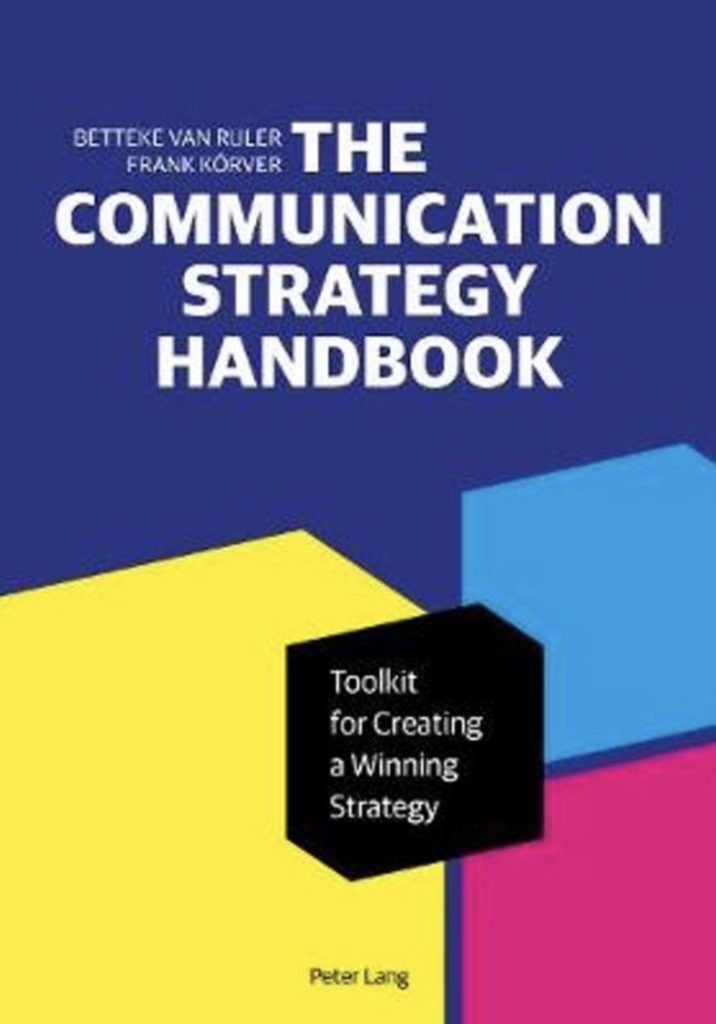The Communication Strategy Handbook provides a toolkit for creating a winning strategy.
Publisher: Peter Lang (NY) (2019)
Click here for more information.
Click here to order our book.

“Strategy development is about essence. About making choices. Hard choices! The context in which (connected) leaders need to perform is changing so rapidly, the need to make choices is pretty much a permanent state of affairs. This has immense consequences for leadership style and strategy development. The least thing you should do as CCO is say goodbye to linear communication plans. Asap!”
Frank Körver
Agile strategy development: four starting points
- People over processes: Forming a group of skilled and motivated people is vital. In fact, I strongly believe that people trump process.
- Respond to change rather than follow a plan: It is a waste of time to put effort into every tiny detail. Vision and ambition are vital, but more operational choices need to be challenged over and over again. Plans should never be too detailed, and only oriented at the most important decisions made.
- Cross functional collaboration rather than silo behavior: The majority of communication and reputational challenges we are facing nowadays require intensive collaboration. Developing strategies in splendid isolation is a no-go. Strategy development requires cross functional collaboration. Teaming is everything.
- A one-pager over a bulky report: Why torture professionals and make them read bulky plans? Or even worse, why give professionals the thankless task of writing those documents? Top management only cares for vital information: “What are the communications objectives? How will the company benefit? How are we going to realize these objectives? And what will it cost?”
The Communication Strategy Framework
These 4 starting points inspired Frank Körver and Betteke van Ruler to develop a new, more practical approach to strategy development: The Communication Strategy Framework.

The Communication Strategy Framework consists of eight building blocks (see figure 1) and guides professionals to ask and answer the right questions. At the right time. The Framework forces you to connect vision with context. And it triggers professionals to evaluate what the organization and its top management really needs.
In the Framework context is key and focus the name of the (strategy) game.